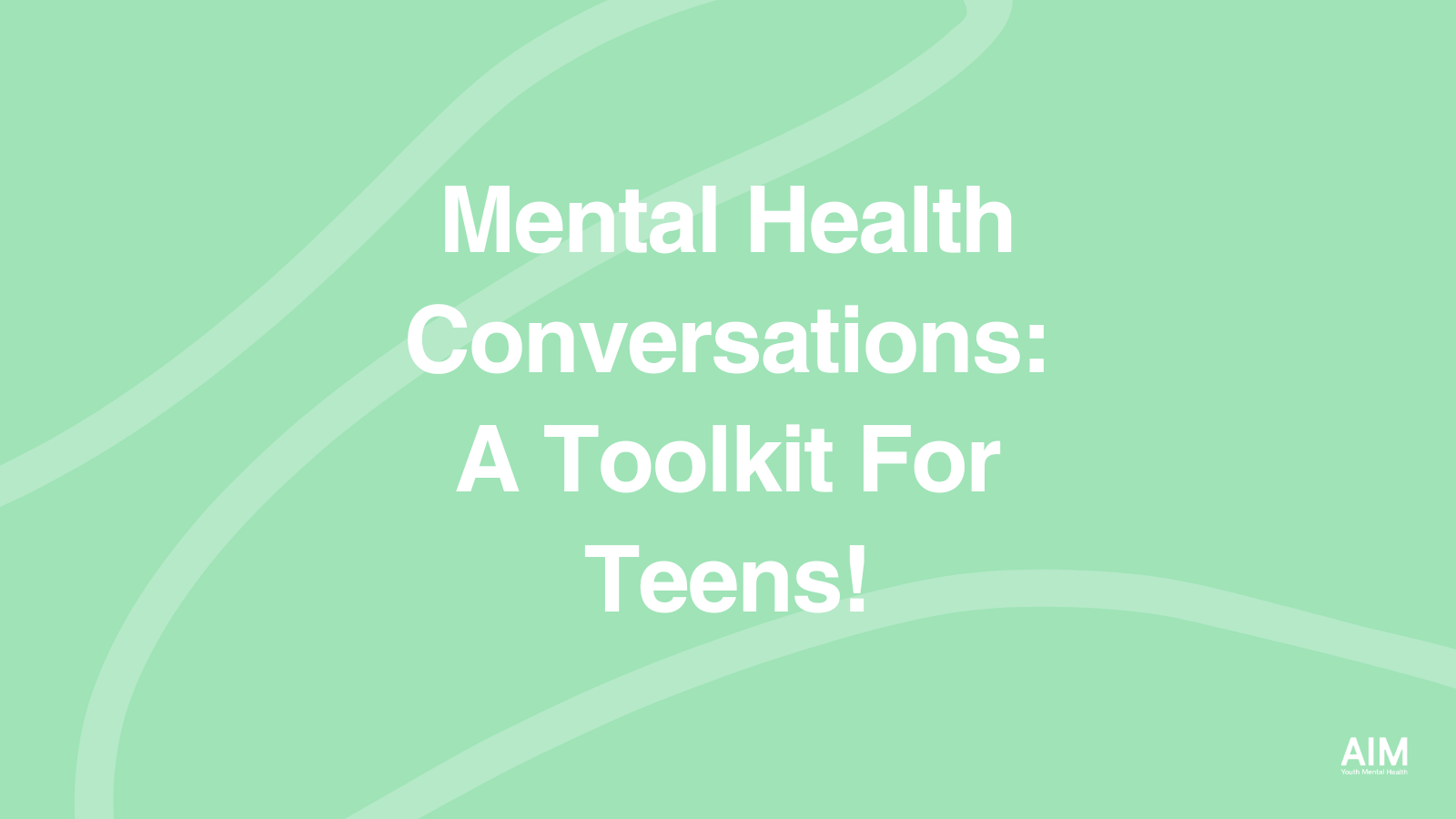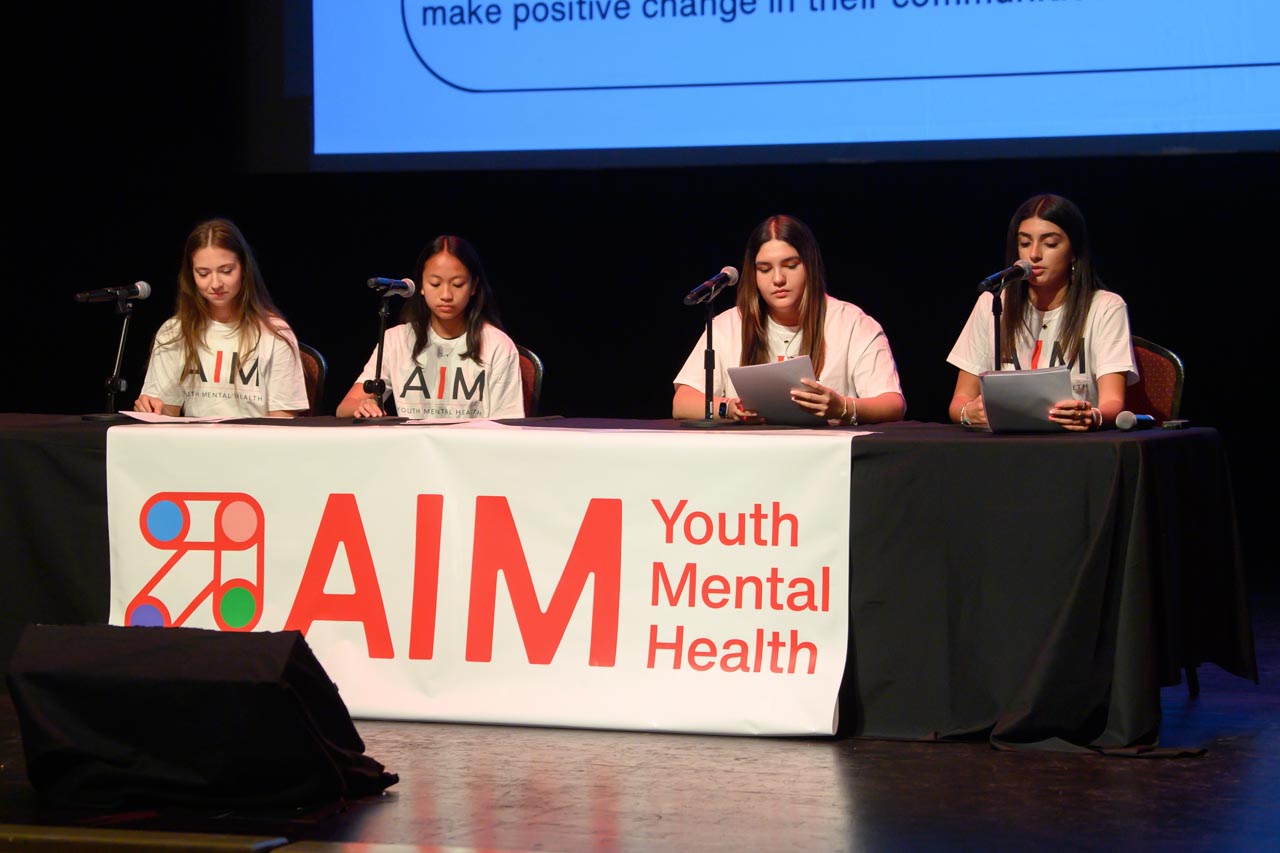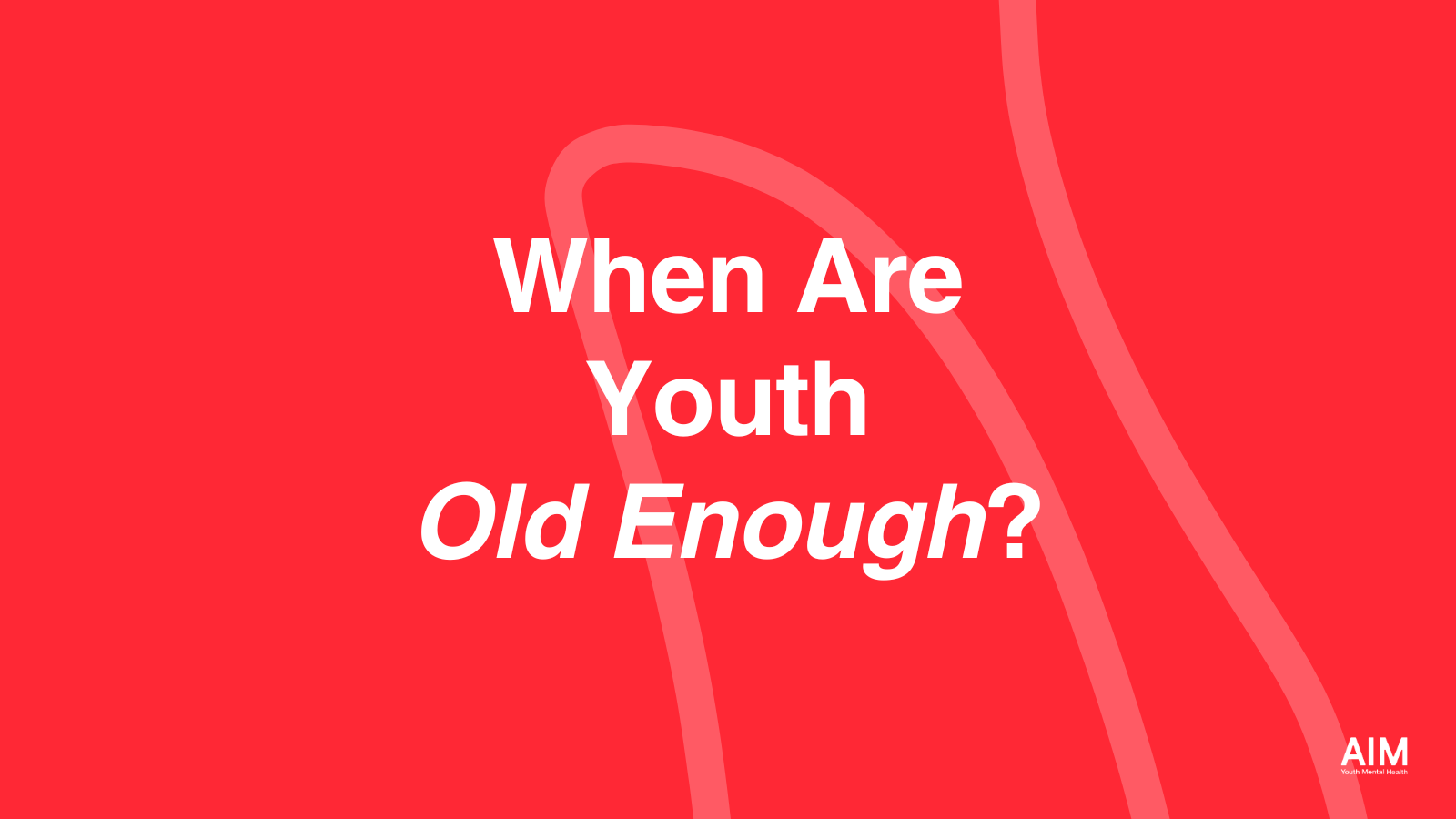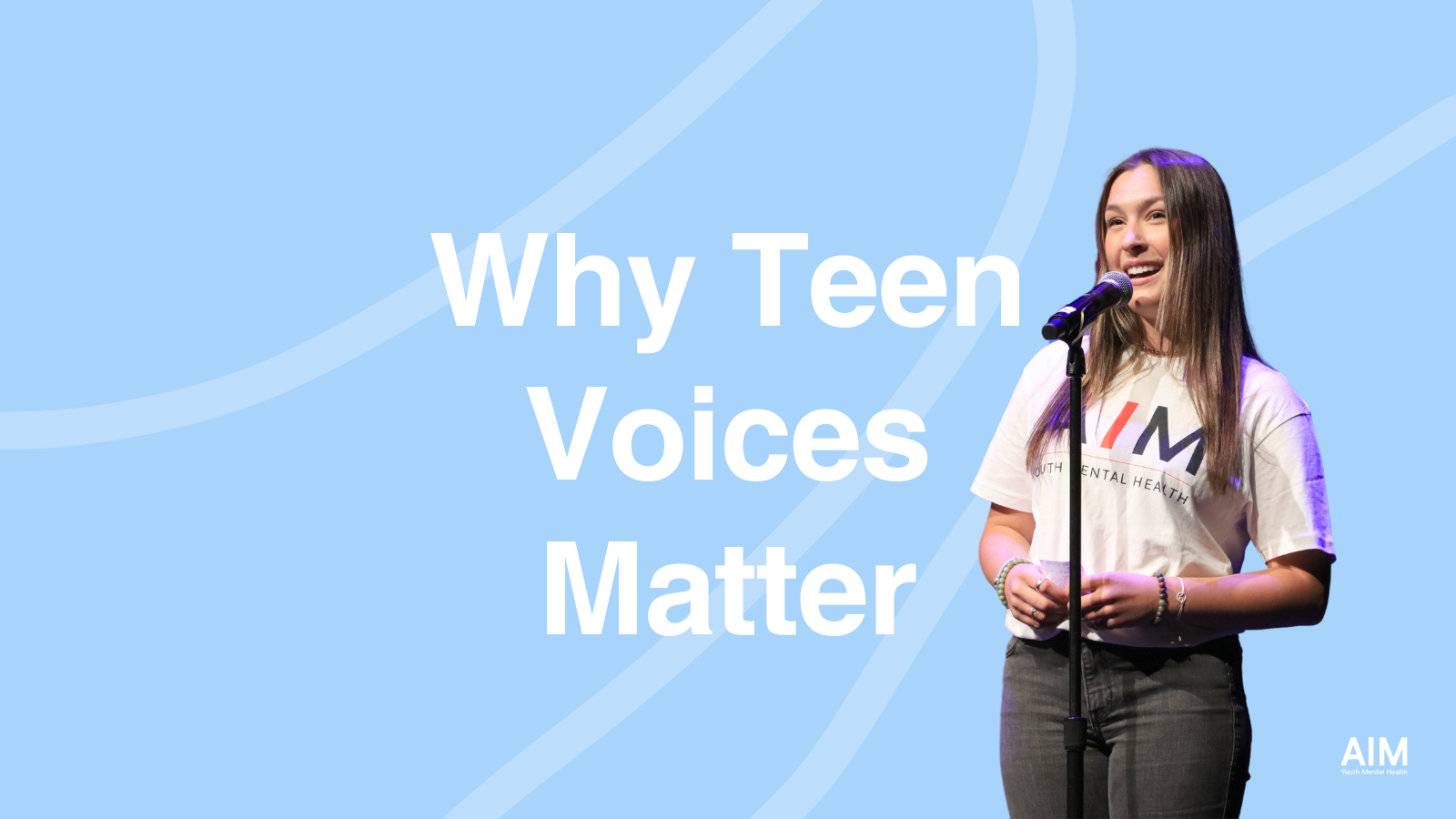There is no “right” way to ask for help and there is no “right” way to give it.
Mental health chats can feel daunting and deeply vulnerable. These conversations imitate life: messy, scary, uplifting, silly, awkward, empowering. And yet, this discourse ultimately leads to feelings of connection and support—reminding us that we are all experiencing this great journey, together.
This year’s AIM Ideas Lab youth researchers uncovered that teens are turning to each other for support before family members, trusted adults, or mental health professionals. And why shouldn’t they? The tools built to support them aren’t working for them… yet.
So while students continue to turn to each other to have these talks, we are here to equip them with the tools to engage in conversation.
Whether you are asking for help, or giving it, here are two Toolkits to approach mental health chats feeling empowered and confident.
How To Ask For Help (3 Steps)
1. Identify your support system
Pick a trusted and supported relationship to approach. Think about who you turn to for specific moments in life: perhaps you go to your parents for moral conundrums, maybe your friends for dating advice. Rather than placing all your eggs in one basket, diversifying your support system is kinder on each of your relationships and allows you to have a robust and comforting network. When it comes to your mental health, think about who makes you feel seen, supported, and loved in vulnerable moments. Start with them, and/or with a mental health professional.
2. Ask the questions
It’s important to remember that our friends and loved ones cannot, indeed, read our minds (as much as it can feel like it). It is not always the case that our feelings are glaringly obvious. If your supportive person does not notice that you are struggling, that does not mean that they do not care. The reality is that typically, we need to ask for help in order to receive it.
Taking that first step looks like bringing a loved one into a vulnerable moment to say, “I’m not doing well and I would really appreciate your support. Are you in a place to be able to help me?”
Note that last question in particular… It is considerate in this stage to take a pulse check on your supportive person. Do they have the capacity to be supportive right now? Asking this question is not only considerate of your relationship, it also avoids placing expectations on someone who is not able to meet them in this current moment.
3. Clarify the how
Love languages have been seemingly ubiquitous amongst mental health and relationship conversations over the past few years. An interesting dynamic to note when thinking of love languages is that how we show love is not necessarily how we want to receive love.
With that being said, as you explain to your friend what you have been experiencing, also tell your support system how you would like to be supported. Perhaps a check-in text message, going on a neighborhood walk together, watching a movie, being a safe space to just talk, you name it.
An example of this could look like: “Hey, I haven’t been feeling so great recently. I am trying to take care of my mental health but have been going through it. I was thinking of trying a digital group therapy session I found, would you come over and sit in on it with me?”
If you don’t know what makes you feel comforted, tell them that too!
An example of this could look like: “I’m not entirely sure what type of support I need at this moment. Maybe we could start by just talking? I don’t think I need advice yet, moreso just a listening ear.”
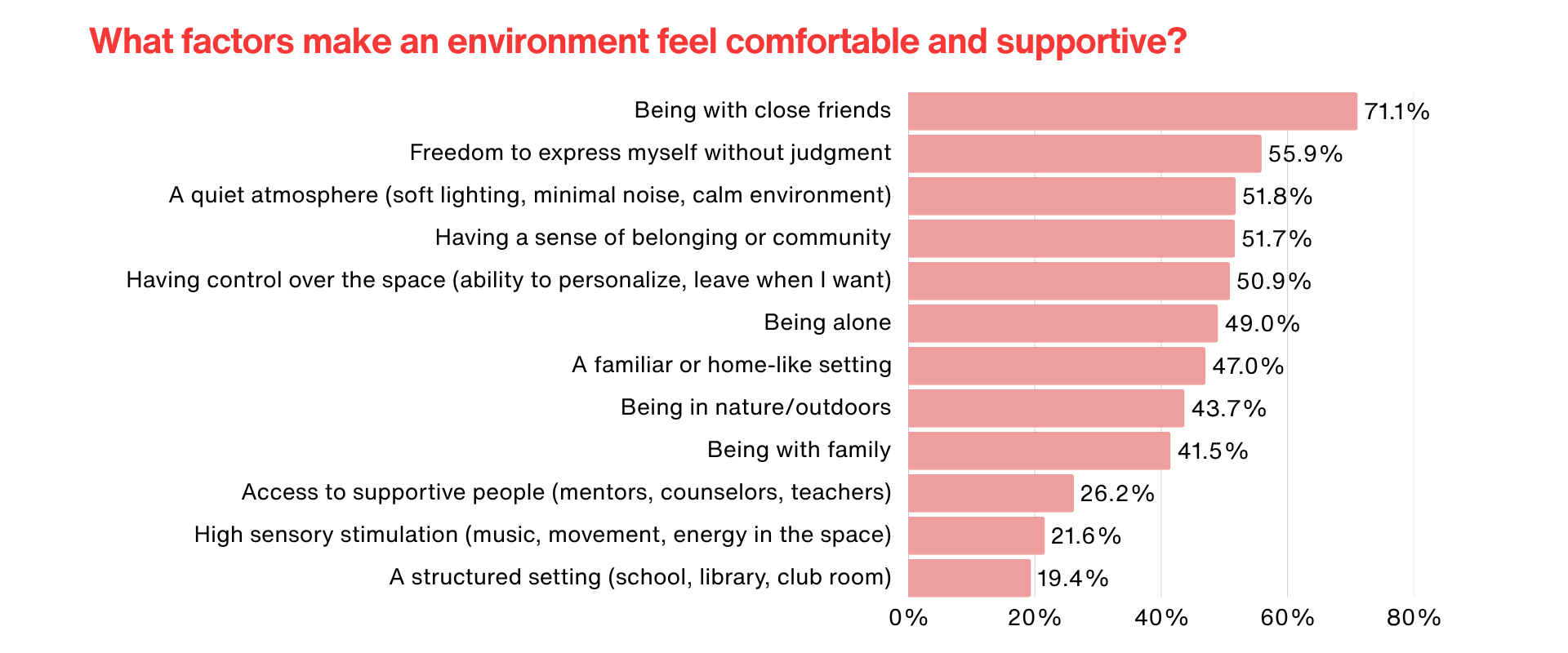
What To Do When A Friend Asks For Help
When a friend comes to you for mental health support, congratulations! You have established yourself as someone who is safe to talk about mental health with, what a compliment. When identifying your style of supportive friend, keep this perspective in mind: you don’t have to have the answers, you just have to be a friend.
1. Check in on your emotional availability
First things first, when someone asks you for help, take a pulse check on if you have the emotional availability. You cannot pour from an empty cup. The kindest thing you can do for a friend who needs support is to be honest about if you can give it. If you have been drained, low energy, or your mental health isn’t feeling so hot, you can kindly redirect your friend while maintaining the relationship.
This could look something like: “I am so sorry to hear you have been struggling. I want you to know how much I care about you and that I am always here for you. I especially hear you because recently I have not been doing so well myself. I don’t think I’m in a good place right now to be your rock, but I would love to be mental health buddies. Maybe we could start doing neighborhood walks to talk or just to get outside together?”
If you are in a place to be the uplifting friend, start by expressing that and thanking your friend for coming to you. This could look like, “I’m so proud of you for asking for help! That shows how strong you are. I know you can get through this and I’m right here with you. How can I help?”
2. Be curious
Being supportive of others’ mental health means being curious. Mental health is as unique as the individual. Meaning, two different people with the same diagnosis could have vastly different experiences, preferences, and triggers. Learning more about your friend’s unique experience, as well as mental health as a whole, empowers you as a knowledgeable and supportive friend.
Asking about their experience shows you care. You can ask about their feelings, what self care routines they have tried, what their likes and dislikes are, what makes them feel supported, how you can be a part of that support, what triggers them, what calms their nervous system, etc.
3. Support, don’t solve
This is the crux of helping someone with mental health challenges. Leave the healing to the professionals, and the friend themself. “Helping someone heal” isn’t empowering them, it’s giving you a faux sense of control or support. The absolute best thing to do is to support, not solve.
You can ask your friend if they want advice or just a listening ear. If they are open to advice, speak from personal experience. Share your mental health stories, struggles, and wins through your own lens. Remember, the same things aren’t guaranteed to work for your friend. Show that you have gone there with yourself and are happy to talk through what that process may look like for them. Heal alongside each other.
Some other ways to show support include:
- Validate their experience
- Be understanding of their limitations (i.e. don’t expect them to go out or text you back right away if they are experiencing depression)
- Respect their trust
- Listen actively
- Provide healthy distractions
4. Pull in a parent or professional when needed
You do not need to be available 24/7, to put yourself in danger to watch over a friend, to feel guilty if things are going well for you, or if you cannot give all that your friend is asking. If any of this becomes overwhelming or if you feel at a loss with how to support your friend, turn to a trusted adult. Whether that’s a parent, school counselor, or a professional. You are not meant to hold this alone.
Here are some examples of some signs that you need to pull in an adult:
Any concerns about safety, whatsoever. If your friend is hurting themselves or others, or showing signs that they might.
- If you believe your friend has developed an eating disorder.
- If your friend is experiencing hallucinations or beliefs that aren’t realistic
- If the situation feels more adult than you should be dealing with
- If your mental health is being impacted by the weight of this friendship
- If you have a gut feeling
If you don’t know who to turn to, here are some free and confidential resources:
The Trevor Project focuses on suicide prevention for LGBTQ+ youth. They have a 24/7 line you can chat, text, or call as well as a plethora of information online.
Seize The Awkward is a resource all about talking about mental health with friends. They have stories, more information about what to say (and not to say), conversation starters, etc.
The National Suicide Prevention Lifeline can be reached by calling or texting 988. The website also offers a chat feature.
____________________________________
About the Author
Meadowlark Monaghan (she/hers) is a consultant using her knowledge gained as a mental health professional to act as a liaison between brands, creators, + online communities with the field of psychology and mental health. She also co-hosts the personal development podcast, Thoughts May Vary. Her work has been seen with Madhappy, Local Optimist, The Mayfair Group, Lonely Ghost, AIM Youth Mental Health, NAMI San Diego and more.
